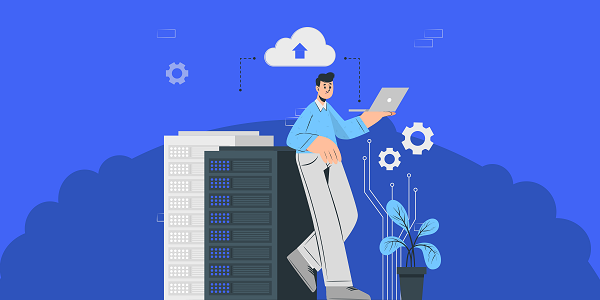Residential Proxies
Allowlisted 200M+ IPs from real ISP. Managed/obtained proxies via dashboard.

Proxies
Residential Proxies
Allowlisted 200M+ IPs from real ISP. Managed/obtained proxies via dashboard.
Residential (Socks5) Proxies
Over 200 million real IPs in 190+ locations,
Unlimited Residential Proxies
Use stable, fast, and furious 700K+ datacenter IPs worldwide.
Static Residential proxies
Long-lasting dedicated proxy, non-rotating residential proxy
Dedicated Datacenter Proxies
Use stable, fast, and furious 700K+ datacenter IPs worldwide.

Web Unblocker
View content as a real user with the help of ABC proxy's dynamic fingerprinting technology.
Proxies
API
Proxy list is generated through an API link and applied to compatible programs after whitelist IP authorization
User+Pass Auth
Create credential freely and use rotating proxies on any device or software without allowlisting IP
Proxy Manager
Manage all proxies using APM interface

Proxies
Residential Proxies
Allowlisted 200M+ IPs from real ISP. Managed/obtained proxies via dashboard.
Starts from
$0.77/ GB
Residential (Socks5) Proxies
Over 200 million real IPs in 190+ locations,
Starts from
$0.045/ IP
Unlimited Residential Proxies
Use stable, fast, and furious 700K+ datacenter IPs worldwide.
Starts from
$79/ Day
Rotating ISP Proxies
ABCProxy's Rotating ISP Proxies guarantee long session time.
Starts from
$0.77/ GB
Static Residential proxies
Long-lasting dedicated proxy, non-rotating residential proxy
Starts from
$5/MONTH
Dedicated Datacenter Proxies
Use stable, fast, and furious 700K+ datacenter IPs worldwide.
Starts from
$4.5/MONTH
Knowledge Base
English
繁體中文
Русский
Indonesia
Português
Español
بالعربية


This paper systematically analyzes the core technical implementation path of e-commerce price crawling, covering key links such as dynamic rendering processing, anti-crawler strategy breakthrough, and heterogeneous data standardization, and proposes a high-availability system architecture design in combination with the abcproxy proxy service.
1. Design of technical architecture for e-commerce price crawling
1.1 Dynamic page rendering processing
Headless browser control: Use Puppeteer/Playwright to simulate user operations and trigger JavaScript dynamic loading of price data
Intelligent analysis of DOM structure: A hybrid positioning strategy based on XPath and CSS selectors to cope with page structure adjustments (tolerance rate > 92%)
Rendering wait strategy: Set up a dynamic loading detection mechanism to determine the data readiness status through element existence checks
1.2 Anti-crawler system
Traffic characteristics simulation:
Request header randomization: dynamically generate 12 HTTP header fields such as User-proxy and Accept-Language
Mouse trajectory modeling: Generate human operation mode that conforms to Bezier curve (average movement speed 120px/s±15%)
IP Rotation System:
Configure abcproxy residential proxy pool to achieve automatic switching of request IP according to rules (change rate ≥ 80% per minute)
Integrate IP health detection API to automatically isolate nodes blocked by target websites
1.3 Data cleaning and standardization
Price information extraction:
Regular expression to match multi-currency price formats (e.g. \$12.34, €12,34)
Handling the nested structure of promotional prices and strikethrough prices (CSS pseudo-element content extraction)
Attribute association mapping:
Construct SKU feature matrix to associate product specification parameters with price fluctuations
Implemented a multi-platform product ID mapping system (matching accuracy > 85%)
2. High-concurrency crawling system optimization solution
2.1 Distributed Architecture Design
The crawler nodes are deployed in Master-Worker mode, and the task scheduling granularity is accurate to the commodity classification level.
Use Redis to implement distributed queue management, supporting horizontal expansion to 100+ node clusters
2.2 Intelligent speed limit algorithm
Dynamically adjust request frequency based on target website response time (baseline value: 200ms/request)
Introducing reinforcement learning models to predict website load thresholds and circumvent access rate limits
2.3 Cache reuse mechanism
Establish a time series database of price data and implement an incremental capture strategy for stable commodities
Define the sensitivity level of commodity price fluctuations and dynamically adjust the monitoring frequency (the crawling interval of high-frequency categories is compressed to 15 minutes)
3. Technical implementation plan for typical scenarios
3.1 Cross-border e-commerce price and tax monitoring
Technology stack combination:
Multi-language page rendering (Selenium Grid cluster)
Real-time exchange rate conversion interface integration
Data Dimensions:
Capture tax-inclusive price, freight, and tariff calculation rules
Monitor the validity period of cross-border exclusive promotions
3.2 Competitive Product Price Early Warning System
Feature Engineering:
Construct price change rate indicator (daily fluctuation > 5% triggers warning)
Identify hidden price reduction strategies (detection of disguised price reduction through gifts)
Response mechanism:
Automatically generate price adjustment recommendation reports
Recommend the best time to adjust prices based on relevant inventory data
3.3 Historical Price Analysis Modeling
Data Application:
Training LSTM model to predict commodity price trends (fit R²>0.78)
Constructing a price elasticity coefficient matrix to guide sales promotion strategies
Visualization:
Generate price heatmaps to show regional pricing differences
Drawing a price fluctuation correlation network diagram reveals the relationship between competing products
4. Legal compliance and ethical risk control
4.1 Data Collection Boundary Management
Comply with the target website's robots.txt protocol and set whitelist domain name restrictions
Implement data desensitization and automatically filter personal information in user reviews
4.2 Access Frequency Compliance
Prioritize the public API of the docking website and reduce the proportion of page crawling
Set up geo-distributed latency policies to comply with access restrictions in different jurisdictions
4.3 Code of Business Ethics
Establish a price data use authorization verification mechanism
Avoid price manipulation through technical means
5. Technological evolution and innovation direction
5.1 Breakthrough in Intelligent Analysis Technology
Developed a CNN-based page structure recognition model to automatically adapt to revisions (accuracy increased to 94%)
Use OCR technology to extract image price information and support screenshot price comparison function
5.2 Edge Computing Integration
Deploy lightweight crawling modules on CDN nodes to reduce network latency
Achieve distributed crawling of terminal devices (daily processing capacity exceeds 10 million requests)
5.3 Blockchain Evidence Storage Application
The captured data is stored on the chain to ensure that the price history cannot be tampered with
Build a decentralized price verification network to enhance data credibility
As a professional proxy service provider, abcproxy's residential proxy and data center proxy products can provide highly anonymous network access solutions for e-commerce price crawling. Through intelligent IP rotation and traffic feature camouflage technology, the continuity and accuracy of data collection are effectively guaranteed. If you need to build an enterprise-level price monitoring system, it is recommended to visit the abcproxy official website to obtain a customized proxy configuration plan.
Featured Posts
Popular Products
Residential Proxies
Allowlisted 200M+ IPs from real ISP. Managed/obtained proxies via dashboard.
Residential (Socks5) Proxies
Over 200 million real IPs in 190+ locations,
Unlimited Residential Proxies
Use stable, fast, and furious 700K+ datacenter IPs worldwide.
Rotating ISP Proxies
ABCProxy's Rotating ISP Proxies guarantee long session time.
Residential (Socks5) Proxies
Long-lasting dedicated proxy, non-rotating residential proxy
Dedicated Datacenter Proxies
Use stable, fast, and furious 700K+ datacenter IPs worldwide.
Web Unblocker
View content as a real user with the help of ABC proxy's dynamic fingerprinting technology.
Related articles

What Are Proxies for Bots? Why do robots need proxy IPs
This article analyzes the core role of proxy IP in robot operation, including improving efficiency, avoiding restrictions and ensuring stability, and explores how abcproxy meets robot proxy needs through diversified products.

How to truly understand the meaning of Limit IP Address Tracking
In-depth analysis of the technical logic and practical value of limiting IP address tracking, and explore the key role of proxy services in anonymous access and data security.

How to choose between Twitter Proxy and abcproxy
This article compares the core differences between Twitter Proxy and abcproxy, analyzes their performance in technical architecture, application scenarios and stability, and helps users choose the best proxy solution according to their needs.